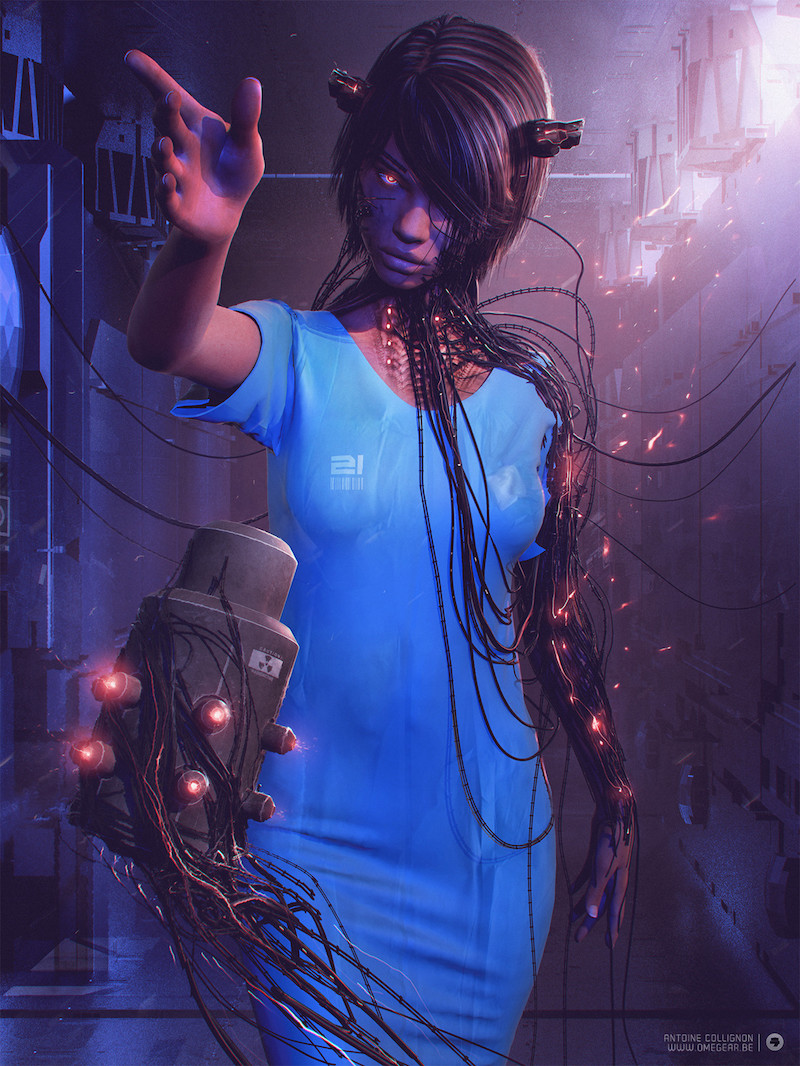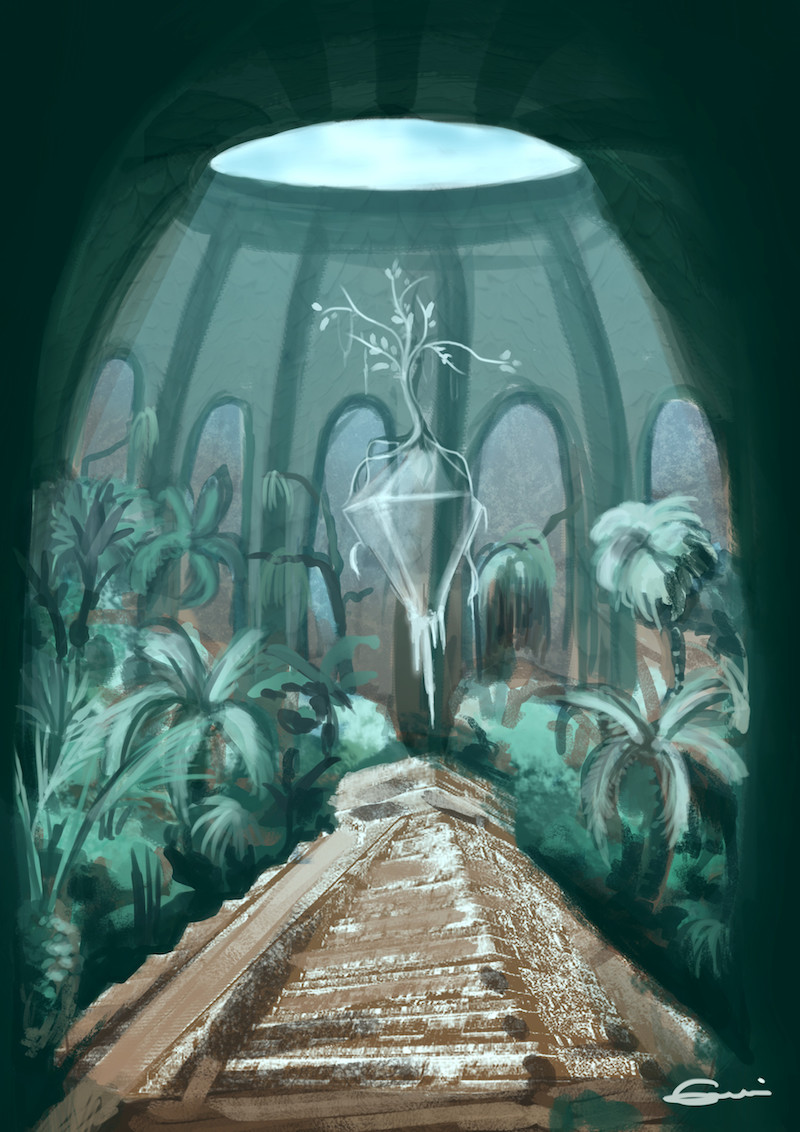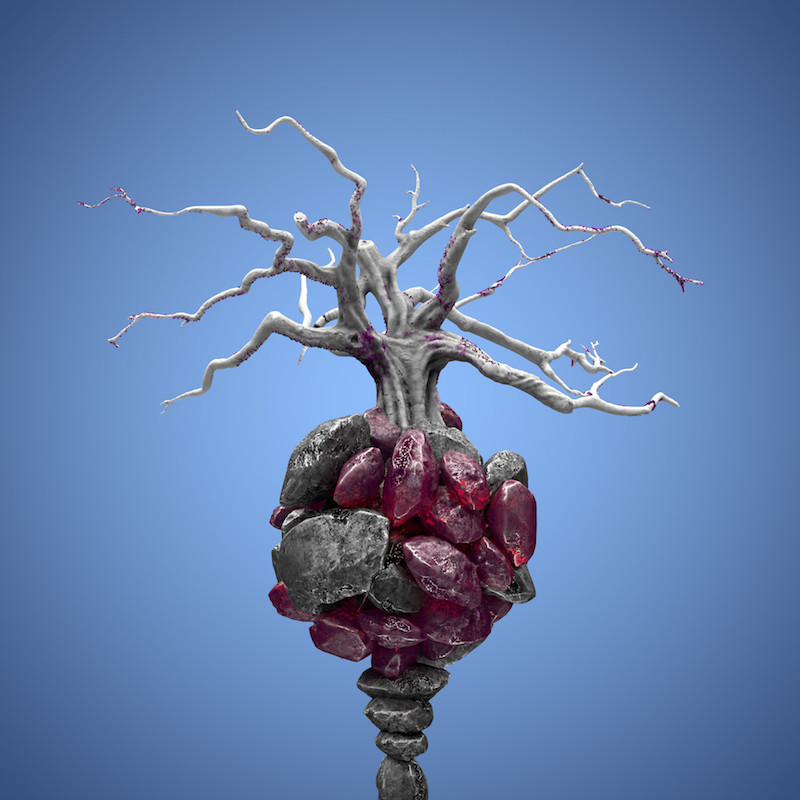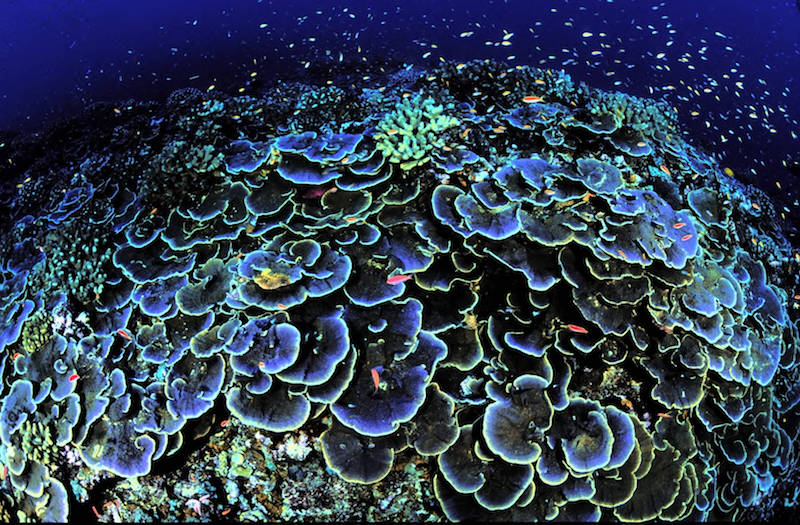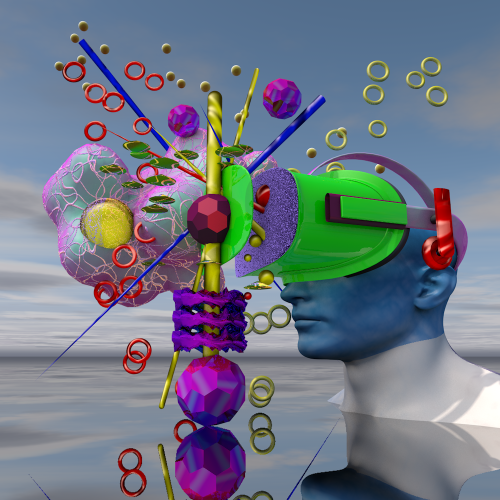Sponsor: Bret Bernhoft
I’m thrilled to announce Exolymph’s first sponsor! Bret Bernhoft is creating an experimental futuristic character called Ruby Leander:
“In 2034 (age 18), Ruby decided to have transhuman implants ‘installed’ into her physiology. Devices/technologies that will follow her throughout the rest of her life. […] She was hired into a new policing program/effort dedicated to sniffing out impurities, forgeries and/or attempts at sabotaging/misusing modern technologies.”
Read the first installment of Ruby’s story and learn more about Bret on his website.
Exporting Japanese Currency & Culture
Thomas Vallance of Virtual Mech (website currently under maintenance) emailed me the following contribution. Lightly edited for this venue.
While the information is flowing I would contend that the gatekeeper is merely a man. Matt Pearce hasn’t spent a considerable enough time sitting by Satan’s eye to say such things. [Vallance is referencing Pearce’s comment about the Panama Papers — “Nobody loves a gatekeeper” — which I quoted in a previous dispatch.]
The euro continues to subdue smaller state currencies — this is true for most except Japan, who has a more powerful running economy than its larger counterpart China. In fact, they contend with economic giants like the United States, Britain, and Europe. This leads one to question; how is it that a nation so small outweighs those with populaces and landmass well beyond their own? Asia in general should be posting a considerable yield, yet we turn to little Tokyo for our Eastern trade opportunities. And that’s the kicker, the yen clocks in so high that unless you speak their language you won’t get a foot in the door.
Not surprisingly, the yen is growing more powerful. Where is China’s great and powerful yuan; is it just another case of outsourcing? An example: when I spoke to my local paper about advertising the comic I am currently writing, they didn’t respond. When I dropped into their office to ask why I hadn’t received a reply, I was referred to an advertising group in Malaysia (they don’t even have the same first language). This off-handing of all queries to Asia, specifically in Japan, seems a common trend, if not an absurd one. You want to ask questions? Just translate them into an Asian language.
Yoshide Suga reported on emergency call numbers as they currently experience 7.3 earthquakes in Kumamoto. Sendai Nuclear Power Plant has reported “no irregularities” — meanwhile US markets will eventually crash under the pressure from China.
I am presently reading the Japanese version of The Godfather, Yakuza — it details their overarching presence in Japan, one that has seemingly spread well beyond their border. I find it interesting that the Yakuza is quite well known while the Triad hardly appears on our radar, apart from niche features.
Back to Sonya again. The Triad is actually pretty well-known in the Bay Area due to its influence on San Francisco’s Chinatown.
I can’t speak for Vallance directly, but I think he’s reflecting on some of the oddities of globalization. The interactions between various national economies are exceedingly complex, but fundamentally human-defined, whereas the natural disasters capable of disrupting everyday life come from deeper powers.
The unleashed energy of nature, pressure built up over centuries — it’s easy to liken it to rage, but an earthquake is more like a cat stretching. Just instinct, just built-up tension following the path of least resistance.
